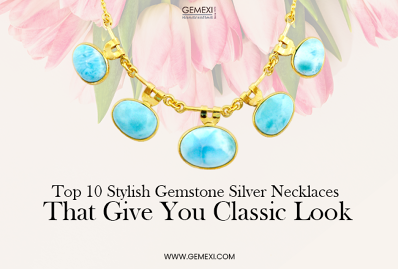Unraveling Napier Jewelry's Vintage Value in Modern Day Fashion
By Gemexi Team | Fashion- Updated On Mar 25, 2020

Lewis, a costume jewelry collector was once in the early 2000s looking for information on Napier pieces of jewelry and was surprised not to find anything substantial on the Internet. Knowing fully well that though Napier might be a half-forgotten brand today, not many years back it was a jewelry brand to reckon with. Obviously she was left wondering as to what was the history of the legendary brand.
Her quest, which lasted a little over a decade, finally culminated in the form of a 1000-page all-colored book called “The Napier Co.: Defining 20th Century American Costume Jewelry” co-authored with former Napier salesman Henry Swen. During the course of her research, Lewis exhaustively researched the century-old company, interviewed its former president, Ron Meoni, spoke to several former employees and even visited the company’s plants at Meriden, Connecticut. She also went through company archives, public records available at Attleboro, Massachusetts (where Napier had started as the E.A. Bliss Company in 1878). Her dedication to see the end of her research can further be gauged from the fact that she spent her honeymoon days, along with her husband, at Meriden talking to septuagenarians and octogenarians who had worked in the Napier plant. “I ended up with all this rich history, from the CEO and the designers, down to the plant manager and regular employees. One designer I interviewed started in 1941, and most of them had stayed with Napier for 30 to 50 years. It was great to have the opportunity to speak with them while they’re still alive because they’re all in their 70s and 80s,” Lewis said while speaking to a section of the media.
Surely enough Lewis’ book is a treasure trove of information on Napier. One of the interesting details that have been published in the book says that James H. Napier, who had bought the company from E.A Bliss in the 1920s and renamed it after himself, was averse to using the term “costume jewelry” for the company. Since his company made large use of rhinestones, he insisted on calling them“foil-backed faceted crystal stones.” According to Lewis’ research, Napier did not want to associate his company with anything that was cheap or of low-quality. He wanted consumers to know that the artisans at Napier paid great attention to details and used only top-notch materials such as real gold and sterling silver, Swarovski crystals, and Japanese nacre faux pearls.
After talking to old employees who had worked directly under the able leadership of Napier, Lewis found that he was a commanding yet lovable boss. He always expected excellence and productivity from his employees though not all worked directly under his eyes in the New York City office. He probably would spend only a couple of months in a year at the Meriden plant but knew everything about the plant. Lewis found that the employees were very protective of their boss and worked hard for the integrity of the company.
Another person whose name continuously came up during the course of Lewis’ research was that of Frederick W. Rettenmeyer, the head designer at Napier from 1907 to 1964. He was known as the “design genius at the company”.Rettenmeyerdid everything to keep the company at the top of its game – from making several trips to Europe to finding inspiration in the Connecticut plant – he did anything and everything. Lewis also found that Rettenmeyer would never waste any jewelry raw material that came to the company. If something was not used at a particular time, he would also ensure that they were stored in the attic for later use. In fact, the former employees of the company revealed to Lewis that it was Rettenmeyer’s habit to often visit the attic and come out with a couple of pieces of stones or something else. He’d take them to his office, spend hours with them and finally come out with an interesting jewelry piece. During the ’50s and ’60s, his team came out with several clever-themed charmed bracelets, such as the “Lanterns” series which took inspiration from Chinese lanterns, “Tropicana” where iridescent opaque beads were used with bright fruit colors, and “Buddha” where several metal Chinese characters, antique coins, and Buddha figures were used.
One of the legacies that were left behind by Napier and are still very popular is the charm bracelets. They may be big and bulky but nevertheless are very popular. According to Lewis, the vintage jewelry from Napier can still be confidently worn by a modern woman. She said, “You can wear the ‘tailored’ jewelry anywhere. If you want to wear something sparkly for a cocktail party, you can absolutely find the perfect piece of Napier. You can even pull off wearing something funky to a party because it’s a conversation piece.”










0 Comments
Write Comments